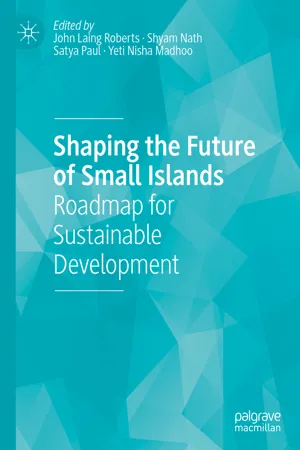
Shaping the Future of Small Islands
Roadmap for Sustainable Development
- English
- ePUB (mobile friendly)
- Available on iOS & Android
Shaping the Future of Small Islands
Roadmap for Sustainable Development
About This Book
The book provides fresh look at the issues of sustainable development, degradation of natural resources and vulnerability to climate change in Small Island developing states (SIDS). It documents the deteriorating state of SIDS and adaptation efforts made to address the impending crisis of unsustainable economic growth with international, national and community support.
Authors have discussed issues like macroeconomic trends, vulnerability, resilience capability, and SIDS-specific strategies focusing on sectors like trade and tourism. Discussion continues with the examination of democracy, social capital, quality of life, and health concerns. Climate change and natural resource challenges are analyzed using case studies. The book also discusses diplomatic complexities of international climate agreements, collective action and institutional quality constitute the analysis of global environment and sustainable development.
Frequently asked questions
Information
Part IEconomic and Development Concerns
1. Transition from Economic Progress to Sustainable Development: Missing Links
Table of contents
- Cover
- Front Matter
- Part I. Economic and Development Concerns
- Part II. Social Dimensions
- Part III. Climate Change and Natural Resources
- Part IV. Environmental Governance and Challenges
- Part V. Global Environment and Sustainable Development
- Back Matter